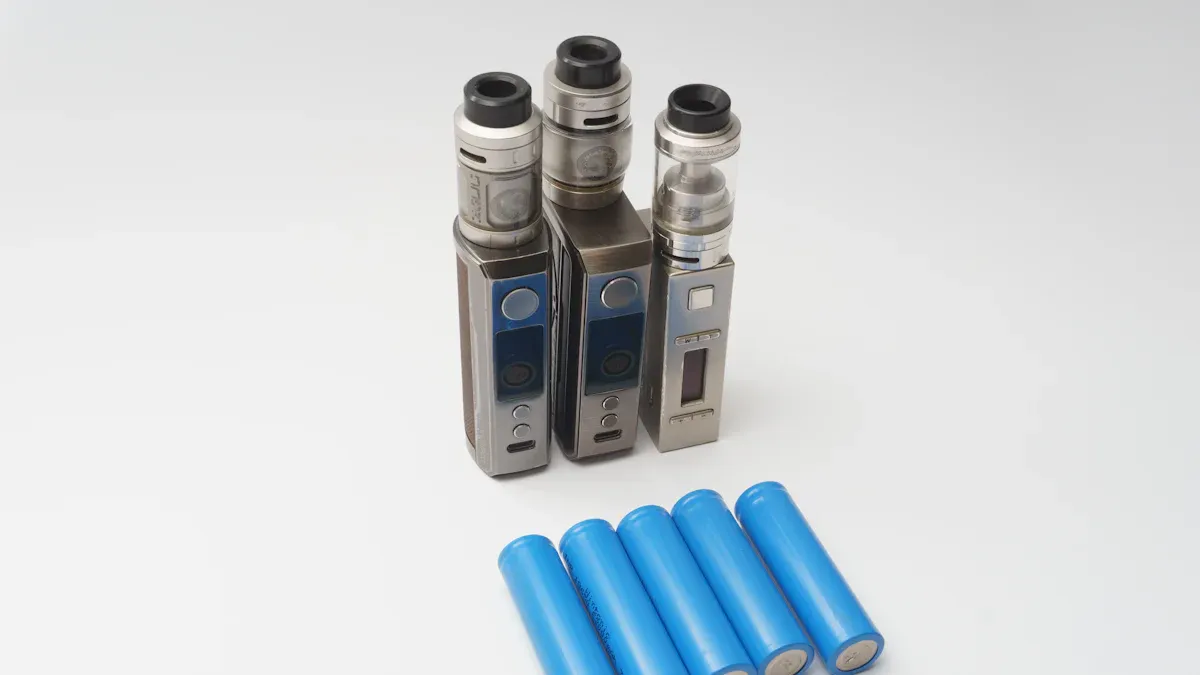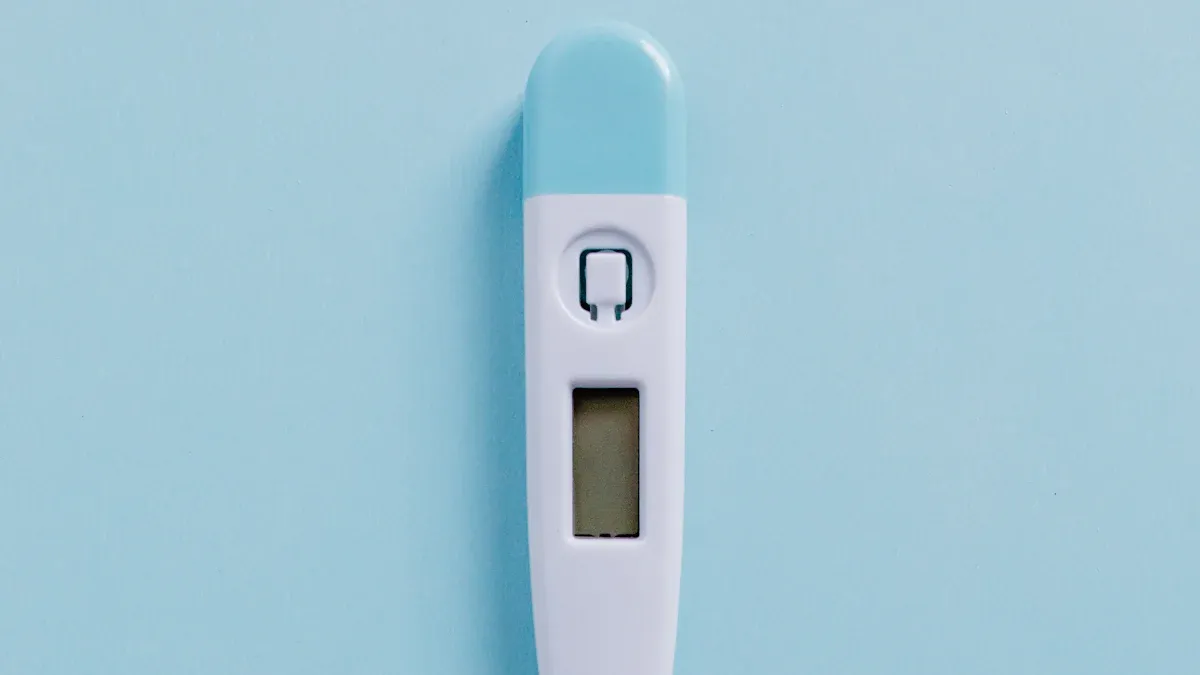
You face five major challenges when designing portable medical batteries:
Energy density limitations restrict advanced device features.
Temperature sensitivity threatens safety and reliability.
Cycle life degradation increases replacement costs.
Inadequate safety mechanisms risk device failure.
Regulatory compliance complexities limit design options.
Solving these challenges ensures safety, reliability, and user satisfaction.
Key Takeaways
Address energy density limitations by selecting the right battery chemistry early in the design process. This choice impacts device performance and safety.
Implement effective thermal management strategies to prevent overheating. Use Battery Management Systems and proper enclosure designs to maintain safe operating temperatures.
Ensure compliance with safety standards like IEC 62133 and UN 38.3. Meeting these regulations protects patients and enhances device reliability.
Part 1: Portable Medical Batteries—Power vs. Size

1.1 High Capacity in Compact Designs
You often face tough choices when designing portable medical batteries. You need to fit high-capacity batteries into small spaces without sacrificing performance or safety. In medical devices, this challenge becomes even more critical. You must balance battery capacity with compactness, which can affect charging efficiency and battery production. The choice of battery chemistry and form factor shapes how well your device performs in real-world situations.
Tip: Define your power requirements and battery parameters early. This helps you select the right chemistry and form factor for your application.
Engineers in the medical, robotics, and security sectors often prioritize low-power microcontrollers and sensors. These components help extend battery life and reduce hazards such as overheating or fire. You should also integrate power management strategies from the start. This ensures your batteries meet usage needs and comply with safety standards.
1.2 Optimizing Energy Density
Energy density remains a key factor in battery production for portable medical batteries. Lithium-ion batteries, especially NMC and solid-state types, offer high energy density and long cycle life. These batteries support fast charging and low self-discharge, which is vital for emergency medical devices. However, size constraints and finite lifespan still limit their use in implantable or long-term applications.
Here is a comparison of common lithium battery chemistries used in medical and industrial sectors:
Chemistry | Platform Voltage (V) | Energy Density (Wh/kg) | Cycle Life (cycles) | Typical Applications |
|---|---|---|---|---|
LiFePO4 | 3.2 | 90–120 | 2000–7000 | Medical, robotics, infrastructure |
NMC | 3.7 | 150–220 | 1000–2000 | Medical, security, industrial |
LCO | 3.7 | 150–200 | 500–1000 | Consumer electronics, medical |
LMO | 3.7 | 100–150 | 300–700 | Medical, industrial |
LTO | 2.4 | 60–110 | 7000–20000 | Medical, infrastructure, robotics |
Solid-State | 3.7–4.2 | 250–400 (projected) | 2000+ | Medical, future robotics, security |
Lithium-ion batteries have transformed portable medical batteries by providing high energy density and reliable performance. They also reduce the risk of fire and other hazards when paired with advanced battery management systems. As you design your next device, consider how compact battery designs can improve usability and safety, especially during emergencies.
Part 2: Thermal Regulation Challenges

2.1 Preventing Overheating
Thermal management plays a critical role in portable medical batteries, especially those using lithium-ion batteries. You must address overheating to meet battery safety standards and protect patients from hazards like fire or device failure. Overheating can cause tissue damage, alter drug efficacy, and reduce device longevity. Medical device manufacturers must follow strict standards and safety testing to prevent safety concerns.
The main causes of overheating in lithium-based batteries include:
Cause | Explanation |
|---|---|
Internal Resistance | Impedes current flow, generating heat as per Joule’s law (Q = I²R). |
High Charging Rates | Rapid charging leads to lithium ions accumulating on electrodes, increasing resistance and heat. |
Aging Batteries | Older batteries have higher internal resistance, producing more heat during charging. |
Environmental Factors | High temperatures increase heat generation; low temperatures decrease efficiency, increasing heat. |
Poor Contact | Unstable connections increase resistance, leading to localized heating. |
Overcharging | Excessive charging can lead to overheating. |
High Current Discharge | High discharge rates can generate excess heat. |
Internal Short Circuits | Can cause significant overheating and potential failure. |
You should use protection systems like Protection Circuit Modules (PCM) and smart battery features to monitor and control battery performance. Mechanical design also matters. Enclosures must allow for battery expansion and include vent holes for airflow. These strategies help you meet battery safety standards and reduce fire risks during battery production and testing.
2.2 Advanced Cooling Solutions
You can improve safety and reliability by using advanced cooling technologies. Temperature consistency is vital for battery life and performance. Battery Thermal Management Systems (BTMS) must keep cells within safe temperature ranges and minimize differences among cells. Effective thermal management prevents thermal runaway and enhances efficiency.
Technology | Description |
|---|---|
Active Thermal Control | Maintains stable cell temperature, reduces aging, and lowers maintenance costs |
Efficient Thermal Management | Enhances safety, extends lifespan, and improves overall performance |
Liquid Cooling/NEPCMs | Absorbs excess heat, prevents overheating during abnormal conditions |
You should select cooling solutions based on your application and battery chemistry, such as NMC or solid-state. These methods help you address challenges and meet battery safety standards, reducing hazards and fire risks in portable medical batteries.
Part 3: Battery Safety Standards & Reliability
3.1 Meeting Safety Requirements
You must follow strict safety standards when designing portable medical batteries. These standards protect patients and ensure your devices perform reliably in critical situations. Even a small percentage of recalls can have a major impact. For example:
Cause of Recall | Number of Recalls | Percentage of Total Recalls |
|---|---|---|
Battery Failure | 1.42% |
Failing to meet safety standards can lead to severe consequences:
The FDA recalled an Abbott glucose monitoring system in 2023 due to fire risks, affecting over 4.2 million devices.
In May 2022, an implanted Abbott HeartMate 3 device exploded, resulting in fatalities.
A lithium-ion battery bank fire in a Tampa children’s hospital in 2023 forced the evacuation of 80 people.
You should always comply with international standards to reduce these risks. The most relevant standards for lithium battery packs include:
Standard | Description |
|---|---|
IEC 62133 | Focuses on the safety of portable, sealed secondary cells and batteries, especially lithium-ion, protecting against hazards like fire and explosion. |
UN 38.3 | Ensures the safe transportation of lithium cells and batteries, requiring them to withstand shipping conditions without posing hazards. |
3.2 Battery Management Systems (BMS)
You can enhance the reliability and safety of your batteries by integrating a robust Battery Management System. A BMS monitors and controls key parameters, helping you prevent failures and extend battery life. Here are some ways a BMS improves performance:
Mechanism | Description |
|---|---|
Fault Detection | Advanced algorithms identify potential issues early, allowing for preventive maintenance. |
Thermal Management | Effective strategies maintain battery health, extending life and reducing safety risks. |
Redundancy and Fail-Safe | Redundant components ensure continuous operation during failures, enhancing robustness. |
Predictive Maintenance | Data analytics predict failures, allowing for proactive maintenance and minimizing downtime. |
Adaptive Control Strategies | Real-time adjustments optimize performance and maintain battery health for long-term reliability. |
Tip: For more details on BMS and PCM solutions, visit this resource.
Recent innovations in BMS include predictive maintenance, intuitive user interfaces, and real-time monitoring. Companies like Medtronic use adaptive algorithms to optimize battery performance in medical applications. These advances help you address challenges in battery production and ensure your portable medical batteries meet the highest safety standards.
Part 4: Regulatory Compliance Challenges
4.1 Navigating Certification Processes
You face complex steps when certifying portable medical batteries for global markets. Each region enforces unique standards, and you must follow them to ensure safety and market access. For example, the European Union requires compliance with the EU Battery Regulation 2023/1542. You need to compile technical documentation, issue a Declaration of Conformity, and affix the CE marking. If your company has a net turnover above EUR 40 million, you must prepare for a notified body assessment starting August 18, 2025. Both the battery and the device must display the CE mark.
Step | Description |
|---|---|
1 | Ensure compliance with the EU Battery Regulation 2023/1542 by compiling technical documentation. |
2 | Issue a Declaration of Conformity (DoC) and affix the CE marking. |
3 | For manufacturers with a net turnover above EUR 40 million, prepare for notified body assessment starting August 18, 2025. |
4 | Review compliance of the battery and ensure CE marking is present on both the battery and the device. |
In the US, you must meet ANSI C18.2M and ANSI C18.3M safety standards for lithium battery packs. You also need to work with certified labs, which can slow down your schedule due to limited availability. Documentation requirements often cause confusion and delays.
Tip: Use compliance software and train your staff to manage documentation and testing efficiently. This helps control costs and reduces delays.
4.2 Avoiding Compliance Pitfalls
You encounter several challenges during battery production and certification. Testing complexity, limited certified labs, and unclear paperwork can all slow your process.
Factor | Description |
|---|---|
Complexity of testing | Many steps and strict rules increase processing time. |
Need for certified labs | Fewer options for approved testing slow down scheduling. |
Documentation confusion | Unclear paperwork requirements cause delays. |
You also face increased transportation costs and longer delivery times due to compliance requirements. Barriers to import and export can disrupt your supply chain and limit access to life-saving devices. Regulatory changes now require you to meet sustainability and end-of-life management obligations. You must avoid hazardous substances, meet carbon footprint targets, and ensure proper recycling. For more on sustainability, see Our Approach to Sustainability. For conflict minerals, review the Conflict Minerals Statement.
Stay informed about performance, safety, and transportation requirements for lithium battery packs. Battery regulations help prevent hazardous substance release, reduce waste, and ensure recycling. By keeping up with advancements and regulatory updates, you can avoid costly mistakes and reduce the risk of fire or device recalls.
Part 5: User Needs & Interoperability
5.1 Understanding End-User Requirements
You must understand what end users expect from portable medical batteries. Different sectors, such as medical, robotics, security, infrastructure, consumer electronics, and industrial, have unique demands. In medical applications, long battery life is critical. For example, the PB560 ventilator runs up to 11 hours on lithium-ion batteries, which supports patient care during emergencies. You need effective battery management to prevent deep draining and overcharging. Real-time battery status communication helps maintain reliability during power outages or device relocation.
Life-supporting devices require extended battery life.
High reliability is essential for emergency and critical care.
Real-time status updates improve patient safety and device performance.
Common complaints about battery performance include sudden power loss, overheating, and chemical exposure. The table below shows the most frequent issues you may encounter:
Complaint Type | Description |
|---|---|
Power Loss | Sudden device failure due to power loss can interrupt patient monitoring and delay treatment. |
Overheating | Overheating can lead to thermal runaway, resulting in fires or explosions if safety features are lacking. |
Chemical Exposure | Leaking batteries can expose patients and healthcare workers to harmful substances. |
5.2 Ensuring Device Compatibility
You need to ensure that batteries work seamlessly with a wide range of device models. Manufacturers achieve compatibility by using precise voltage regulation, which prevents malfunctions in medical and industrial devices. They design battery packs to fit various physical configurations, addressing volumetric expansion during charging. Custom battery shapes maximize capacity and fit within device constraints. Smart communication systems monitor and adjust battery performance in real time, supporting reliable operation across different platforms.
You must follow strict standards and conduct transportation safety testing to guarantee safe battery production and delivery. These steps help prevent fire risks and ensure that lithium battery packs meet the needs of diverse sectors. Reliable batteries support critical infrastructure, robotics, and security systems, where downtime can have serious consequences.
You can overcome portable medical battery challenges by using proven strategies.
Strategy | Description |
|---|---|
Collaboration | Involve all functional groups in requirements and project evaluation. |
Analysis and Measurement | Measure energy withdrawn for accurate performance. |
Address Operational Factors | Consider use cases and battery life variables early. |
Thorough risk assessments and regulatory compliance improve safety.
Postmarket surveillance helps you monitor battery performance.
Expert consultation supports you through complex approval processes.
FAQ
What lithium battery chemistry offers the longest cycle life for medical devices?
Chemistry | Cycle Life (cycles) | Platform Voltage (V) |
|---|---|---|
LiFePO4 | 2,000–7,000 | 3.2 |
NMC | 1,000–2,000 | 3.7 |
LiFePO4 batteries provide the longest cycle life for portable medical devices.
How do you prevent overheating in lithium battery packs?
You use Battery Management Systems (BMS), thermal sensors, and proper enclosure design. These strategies help you maintain safe operating temperatures and prevent thermal runaway.
What is the main safety standard for lithium battery packs in medical devices?
You must follow IEC 62133. This standard ensures lithium battery packs meet strict safety requirements for medical applications.




